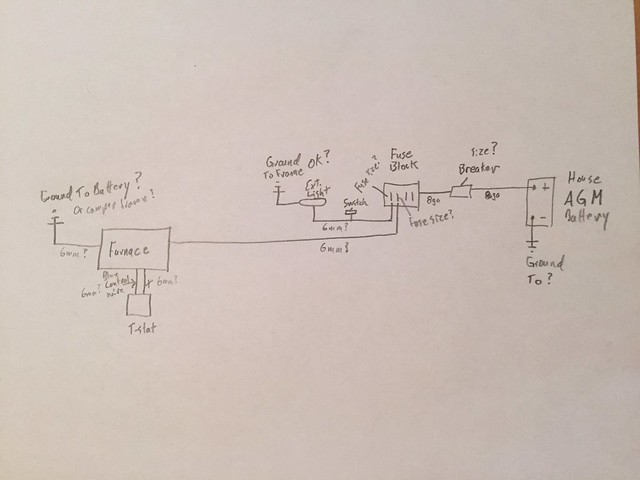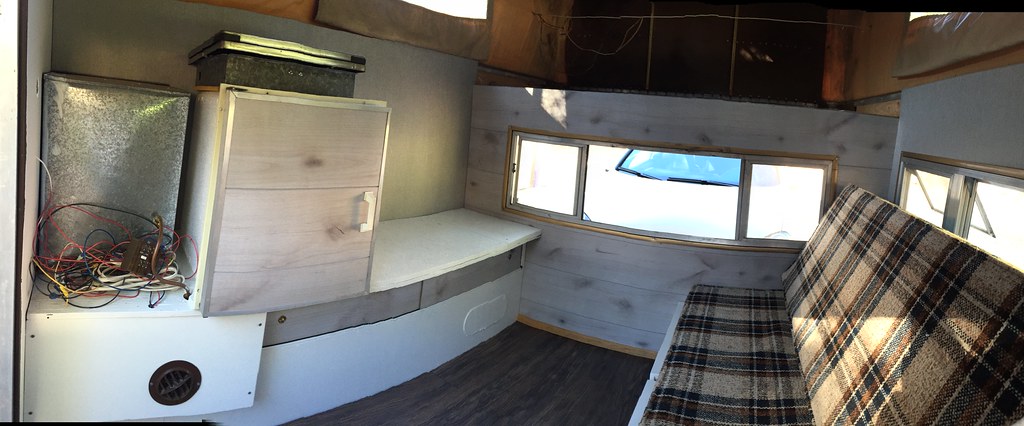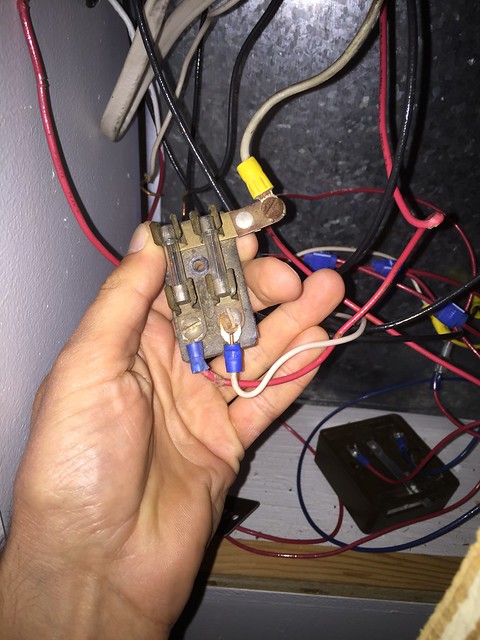Atl-atl
Adventurer
Im rebuilding my 81 FWC Hawk and I need to put the wiring back together. I kept it all intact but removed it. Its very minimal but its old so I need to replace all the wires, the crappy tube fuse and re-route it all. I don't know much about wiring up systems like this so my questions are super basic. I have been researching which is what got me this far. I wrote into the diagram what I think are the correct answers to some of my questions. For now Im simply going to run a house battery that is not connected to the truck. My power needs are so small that I can trickle charge the battery out of the vehicle when not in use. I only camp once a month or so and when I do its usually only for one night and I don't really use any power. My only future power concerns will be how much I need to run the furnace overnight in cold weather if I decide to camp at a ski area or something like that.
Anyway here is my starting diagram. I plan to run a bluetop unless someone has a better suggestion.

My questions so far are:
- When running only a house battery what do I ground the battery negative terminal to?
- What size breaker do I use?
- What size wire do I run between the battery, breaker and fuse block?
- I plan to use a fuse block unless I should use something else. What size fuse do I need for my exterior light and my furnace?
- What size wire do I use from the fuse block to the light/furnace? 6mm?
- Can I ground the light to the camper frame? Thats the way it is currently.
- The furnace ground is currently back to the battery negative. Is that the correct way to do it?
Anyway here is my starting diagram. I plan to run a bluetop unless someone has a better suggestion.

My questions so far are:
- When running only a house battery what do I ground the battery negative terminal to?
- What size breaker do I use?
- What size wire do I run between the battery, breaker and fuse block?
- I plan to use a fuse block unless I should use something else. What size fuse do I need for my exterior light and my furnace?
- What size wire do I use from the fuse block to the light/furnace? 6mm?
- Can I ground the light to the camper frame? Thats the way it is currently.
- The furnace ground is currently back to the battery negative. Is that the correct way to do it?



